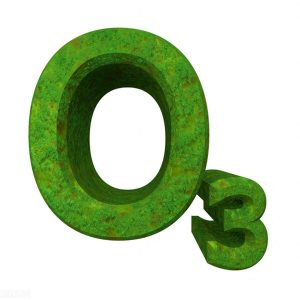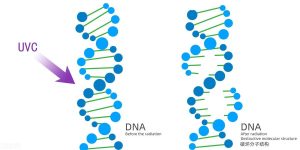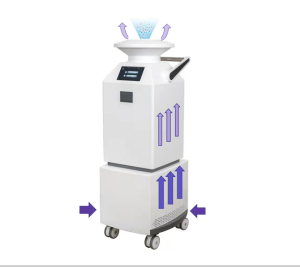Air disinfection machines are equipped with the capability to purify and disinfect the air, aiding in the protection of people's health. However, there are concerns among many individuals regarding the suitability of air disinfection machines for use in the presence of people. This article will provide a detailed overview of different types of air disinfection methods and explore their feasibility in terms of coexistence with humans.
I. Ozone Disinfection
Ozone disinfection machines release ozone in the form of particles, utilizing principles such as filtration, cleaning, and antibacterial properties to eliminate viruses. When used appropriately in indoor settings, ozone disinfection machines are safe to coexist with humans. They not only purify the air but also sterilize and disinfect. However, prolonged exposure may cause damage to the respiratory system, particularly in the case of medical-grade ozone disinfection machines. If the concentration is not controlled within the standard range, despite the rapid sterilization speed, potential harm to the human body may occur.

II. Ultraviolet (UV) Disinfection
UV disinfection machines employ UV light with wavelengths between 200 and 380 nanometers, which possess strong bactericidal properties. When the UV radiation level is low, it is harmless to humans. However, in order to achieve effective sterilization, the intensity of UV light needs to be increased, making it unsuitable for presence of people during the disinfection process.

III. Spray Disinfection
Spray disinfection involves the physical pressurization of disinfectant solution, which is then sprayed into the air for virus elimination and sterilization purposes. However, the water droplets produced by spray disinfection machines cannot effectively disperse and come into contact with dispersed virus aerosols in the air, thus rendering them ineffective for thorough disinfection. It is not advisable to use spray disinfection machines when people are present.

IV. Dual Disinfection Effect of Hydrogen Peroxide (H2O2) Disinfection Machines
Hydrogen peroxide disinfection machines possess the capability to disinfect both the air and object surfaces. The principle involves using a high-pressure atomization device to atomize a specific concentration of hydrogen peroxide disinfectant solution, generating highly concentrated nano-sized disinfection molecules. Additionally, an ozone generator produces a specific concentration of ozone gas. Through preliminary filtration, adsorption, and photocatalyst treatment, hydrogen peroxide disinfection machines can achieve multi-directional, three-dimensional, surround, and cyclic disinfection effects, significantly improving disinfection efficiency and effectiveness, while effectively cutting off the source of infection.

Based on the above information, we can conclude that different types of air disinfection machines have varying suitability for coexistence with humans. Ozone disinfection can coexist with humans when used appropriately, but prolonged usage may harm the respiratory system. UV disinfection is not suitable for presence of people during the disinfection process, while spray disinfection is ineffective when people are present. On the other hand, hydrogen peroxide disinfection machines, with their dual disinfection effect, can effectively achieve coexistence between humans and the machine.